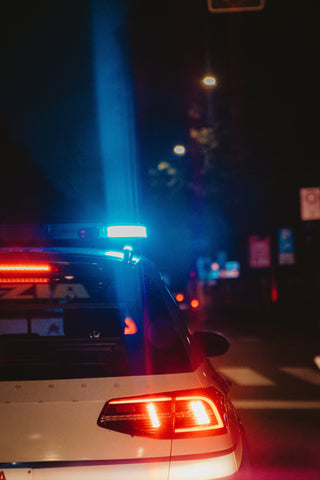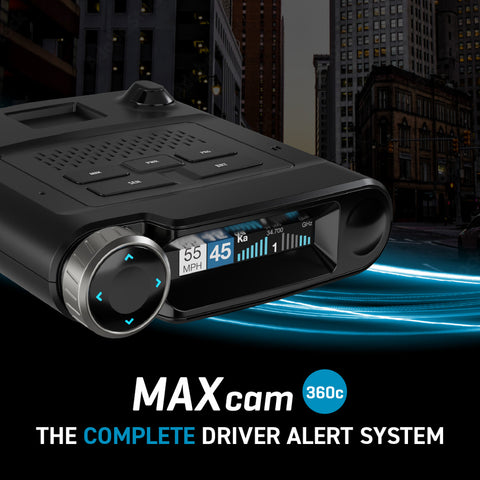How Accurate Is Police Radar While Moving
Wondering how accurate is police radar while moving? The answer is within your grasp. With our expertise spanning over five decades, we at Escort Radar will share insights into the dynamics of radar detection.
We'll explore the nuances behind the accuracy of police radar while moving. From the need for regular recalibration, the impact of multiple speeding vehicles, to natural elements that could skew readings, we'll cover all the angles.
Additionally, we delve into various techniques the police use to detect speeders, including pacing, laser, VASAR, and radar methods.
What this article covers:Is Police Radar Accurate?
The accuracy of police radar significantly varies based on multiple factors. Their precision can be influenced by various conditions.
The Radar Must Be Re-Calibrated
Police radar devices must be regularly recalibrated to ensure their accuracy. Regular maintenance and calibration are essential for precise measurements. Without routine checks, radars can display incorrect speeds because of wear and tear, environmental influences, and technological errors.
Calibration involves adjusting the radar device to match standardized speed measurements. Technicians use tuning forks and certified testing instruments to ensure radars provide accurate readings. This process combats potential inaccuracies caused by device aging or external disruptions.
When There Are Other Speeding Vehicles
The presence of multiple speeding vehicles can affect radar accuracy. Radars might capture the fastest object's speed or blend speeds, leading to inaccurate readings. In traffic, distinguishing between multiple fast-moving vehicles becomes challenging.
Nature Can Obscure The Readings
For those pondering, does police radar work in the rain, natural elements like fog and even high temperatures can obscure radar readings. These conditions interfere with the radar waves, leading to less accurate or false alerts.
Dense materials and environmental obstructions reflect radar waves, causing discrepancies in speed measurements.
Adapting to these challenges requires advanced filtering and sensitivity adjustment. Devices need to distinguish between false alerts caused by environmental factors and genuine speed radar signals.
Ways the Police Detect Speeders
How does police radar know which car is speeding? Our findings show that police employ various techniques for speed detection, including radar. Understanding these methods can help drivers remain aware and compliant with speed limits.
Pacing
Pacing is a traditional method where police follow a vehicle at a constant distance to estimate its speed. This technique relies on the police car's speedometer, which must be accurately calibrated for effective pacing.

While pacing is straightforward, it's subject to human error and requires sustained observation over a distance. Drivers might not always realize they are being paced, leading to unexpected speed-related stops.
Laser
Police also use laser technology for speed detection. Our research indicates that it offers higher accuracy than radar because of its focused beam. However, laser detection requires a direct line of sight and can be affected by environmental factors.
The narrow beam of a laser makes it more challenging to detect early.
Vascar
VASCAR (Visual Average Speed Computer and Recorder) is a time-distance calculation method used by police to measure a vehicle's average speed over a certain distance. Unlike radar and laser, VASCAR does not rely on radio waves.
Based on our observations, this makes it undetectable by traditional radar detectors.
Despite its different approach, being aware of your speed and surroundings remains the best defense against VASCAR enforcement.
Radar
Finally, radar remains a primary tool for speed detection. But how does police radar work? Police radars emit radio waves that bounce off moving vehicles to measure their speed. The technology is well-established and widely used due to its efficiency and effectiveness.
Best Radar Detectors
At Escort Radar, we understand the importance of accurate speed detection. Our range of radar detectors is designed with precision in mind, incorporating advanced technology to deliver reliable alerts.
ESCORT Redline 360c
The ESCORT Redline 360c addresses radar challenges by providing 360° directional awareness. This helps in identifying speed alerts from every direction, ensuring drivers receive precise and relevant information.
The Redline 360c, with its extreme detection range and true stealth, ensures that drivers are informed of their surroundings, reducing the risk of inaccurate speed detection influenced by other vehicles.
ESCORT MAX 360c MKII
Escort Radar offers solutions like the ESCORT MAX 360c MKII, designed to alert drivers about nearby radar signals. This awareness allows drivers to adjust their speed accordingly and avoid situations where pacing could lead to a citation.
The MAX 360c MKII, with its robust internal platform and improved range, gives drivers the advantage of early alerts and comprehensive road awareness, reducing the likelihood of being caught off-guard by pacing techniques.
ESCORT MAX 3
The ESCORT MAX 3 comes equipped with advanced filtering capabilities. This technology helps mitigate false alarms triggered by external natural interferences, providing drivers with more reliable alerts.
It utilizes enhanced filtering methods to ensure that drivers receive precise and timely information, even in challenging environmental conditions. This increases confidence on the road, as drivers can rely on their device to distinguish between false alerts and real threats.
ESCORT MAXcam
Understanding how radar works and its limitations can help drivers navigate the roads more safely. Devices like the ESCORT MAX 360 MKII offer advanced false alert filtering intelligence, providing drivers with the most relevant and accurate speed detection alerts.
Equipped with a Blackfin DSP chip and powerful components, the MAX 360 MKII stands as a top-of-the-line radar detector, ensuring that drivers have the best possible protection against speed enforcement radar.
Conclusion
Our deep dive today has shone a light on just how precise these tools can be and the factors influencing their performance.
We’ve unpacked the factors that affect its precision, from radar recalibration, how other speeding vehicles might skew radar readings, and how nature can obscure accurate detection.
Moreover, we’ve delved into the police’s toolkit for speed detection, including pacing, laser, VASCAR, and traditional radar.
Now is the time to ensure you’re equipped with the best defense against speed detection. Visit our online store today and choose Escort Radar for your driving needs.
If you want to learn more, why not check out these articles below:
- What Band Do Police Radars Use
- Can Police Radar You From Behind
- How Does Police Radar Work
- How Does a Radar Detector Work?
- How Far Can a Radar Gun Reach
- How to Hide a Radar Detector
- How to Read Radar Detector
- What Is a Radar Detector
- Do Radar Detectors Work
- Can Police Detect Radar Detectors
- Does Police Radar Work in the Rain
- Does a Radar Detector Have to Be on the Windshield
- What Does Ka Mean on a Radar Detector
- What Does X Band Mean on a Radar Detector
- What Does Pop Mean on a Radar Detector
 |
| 



